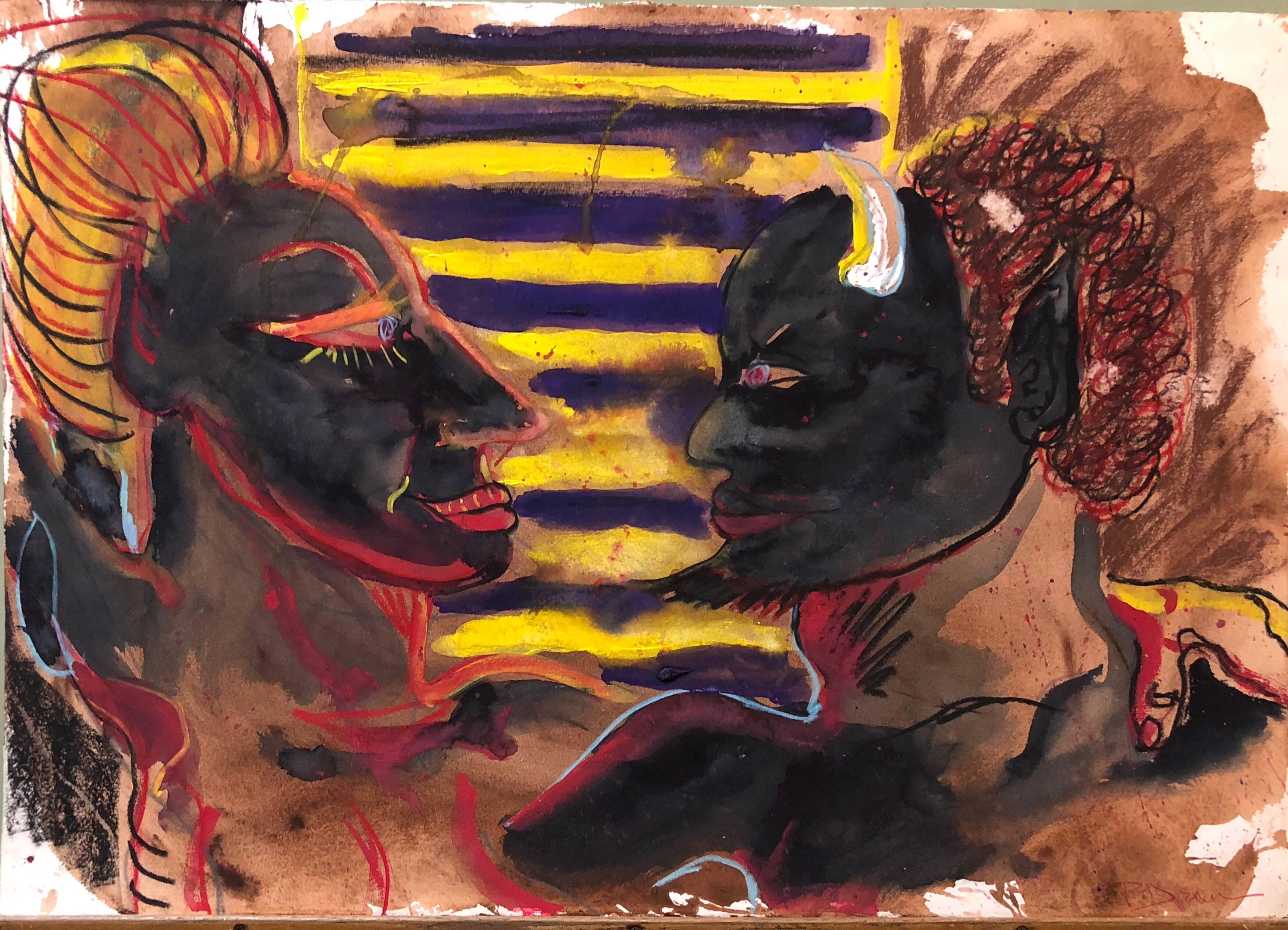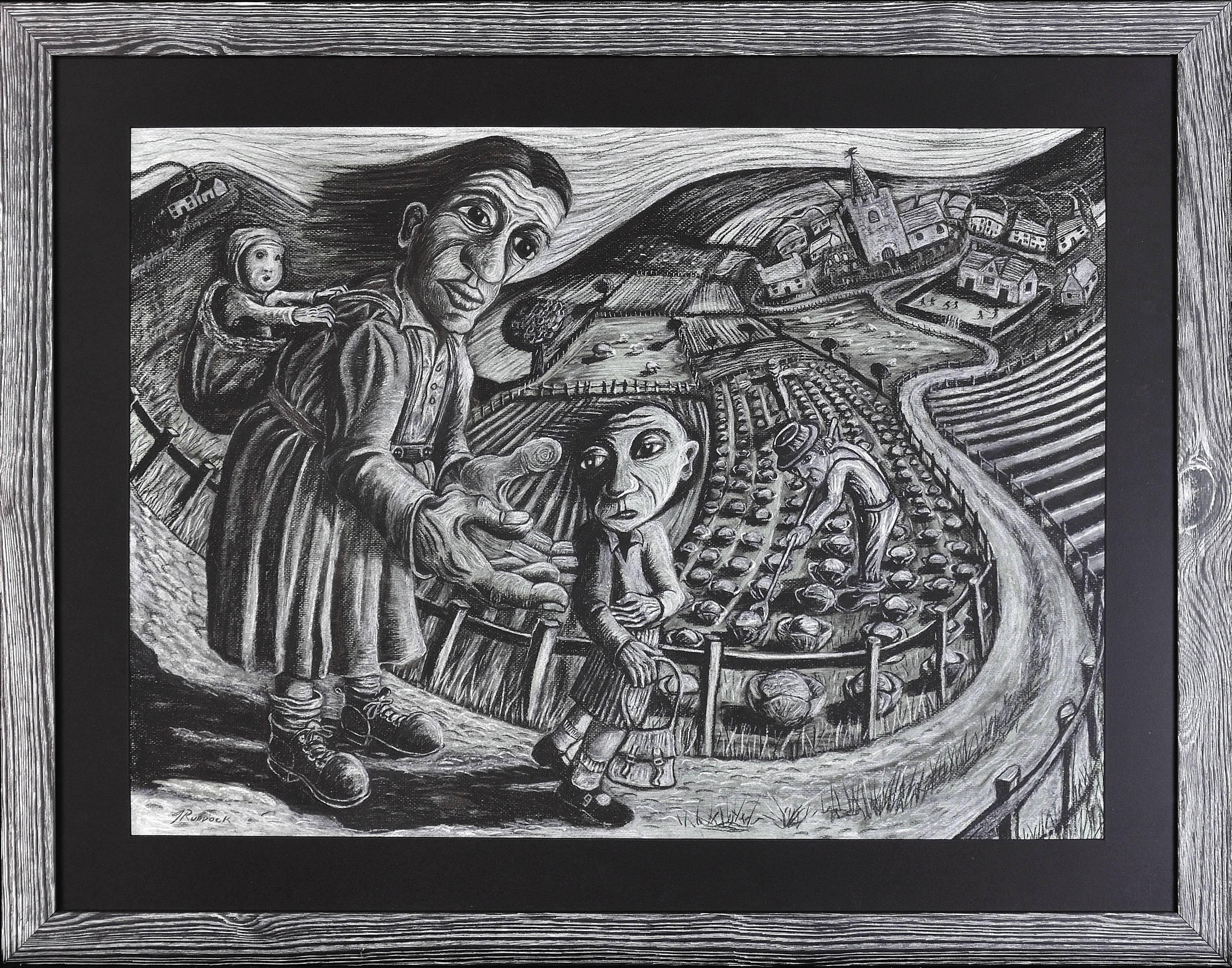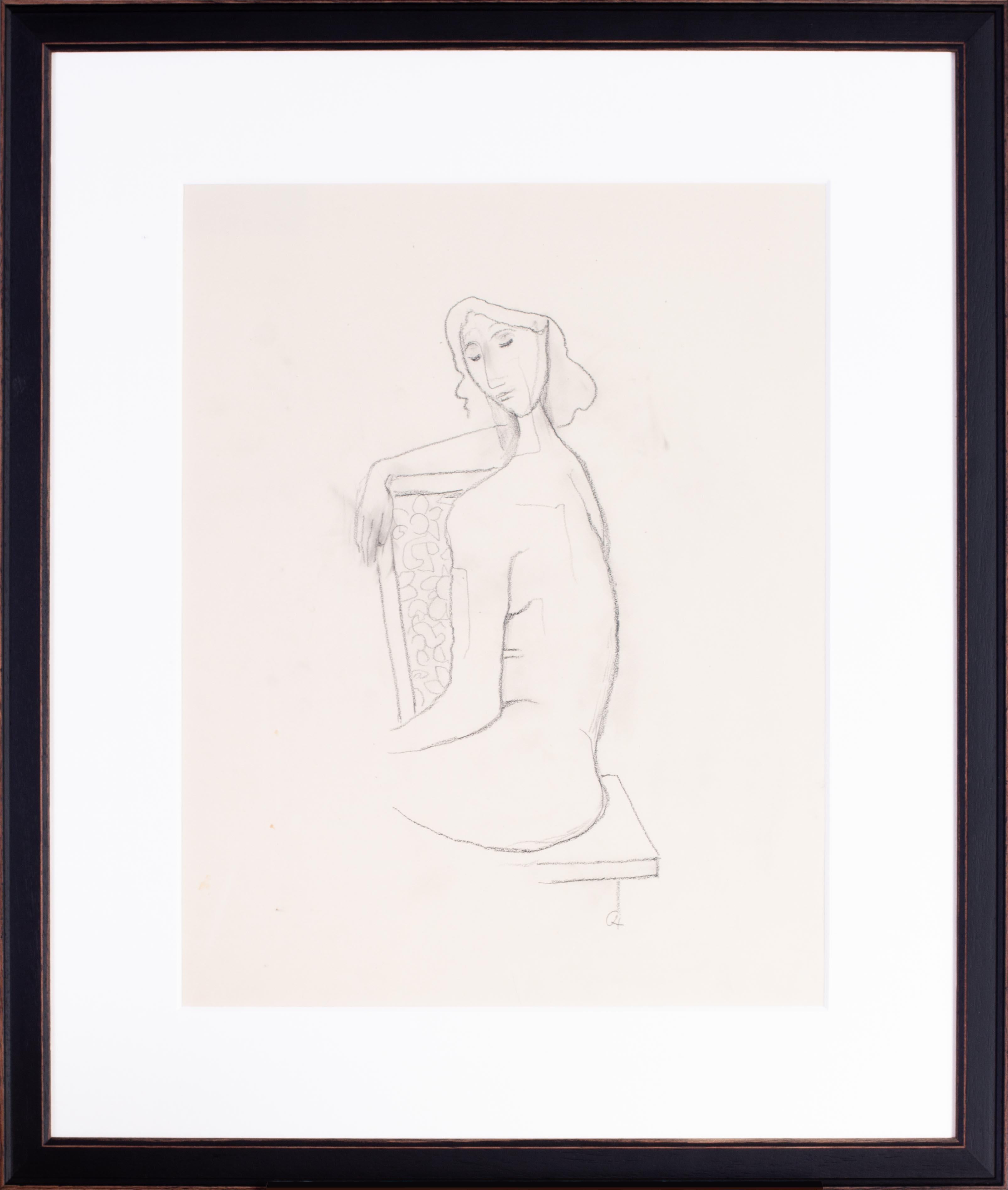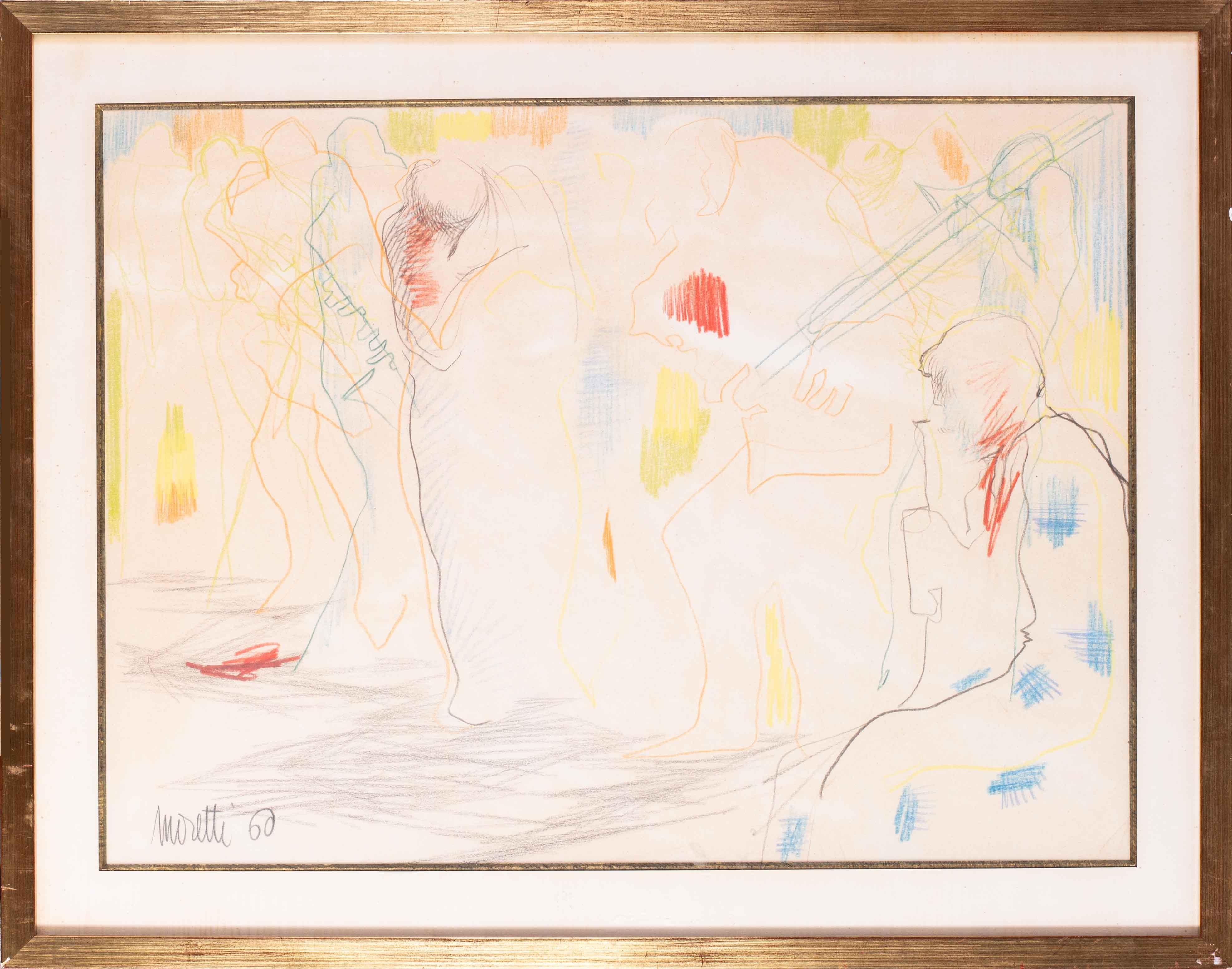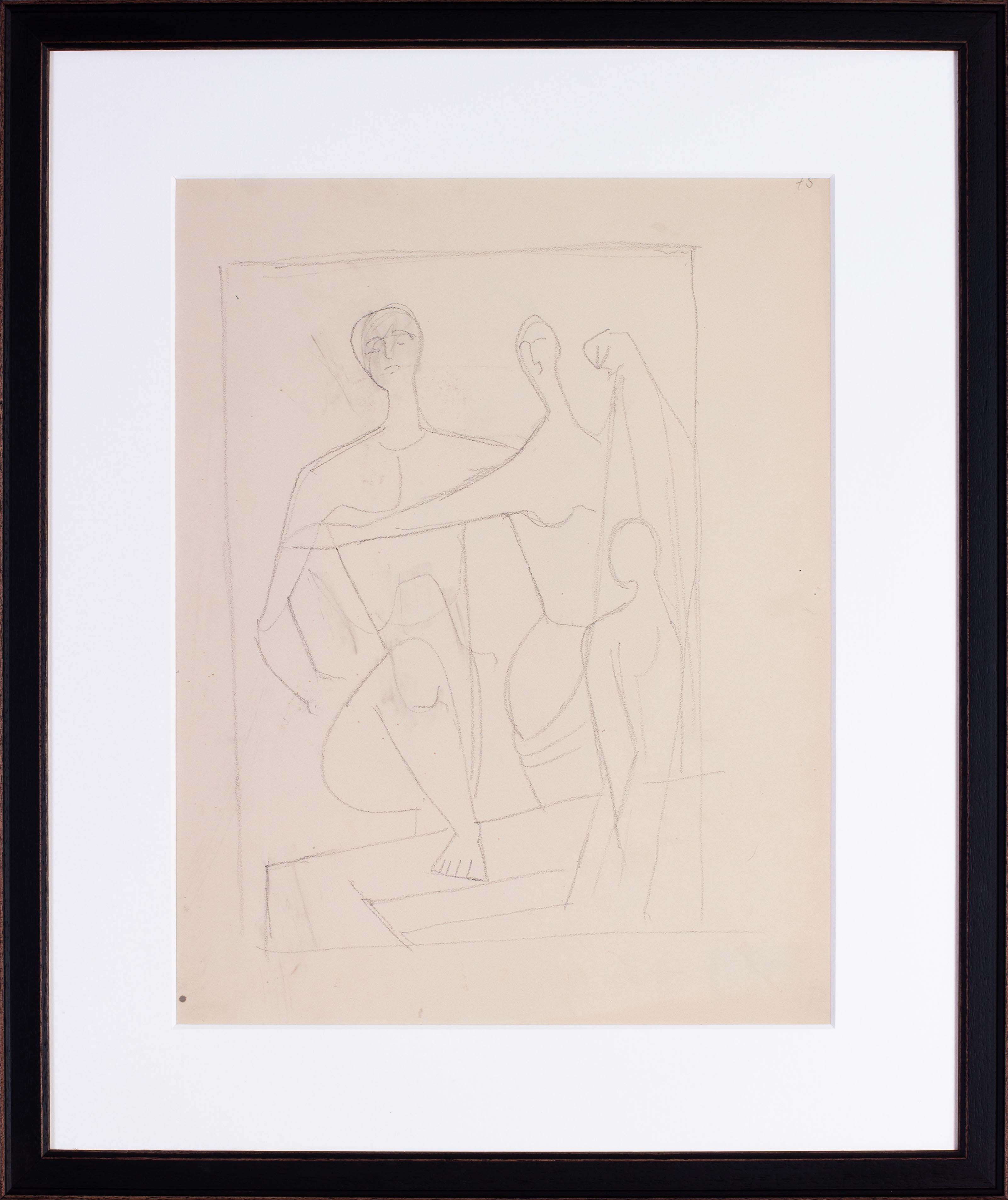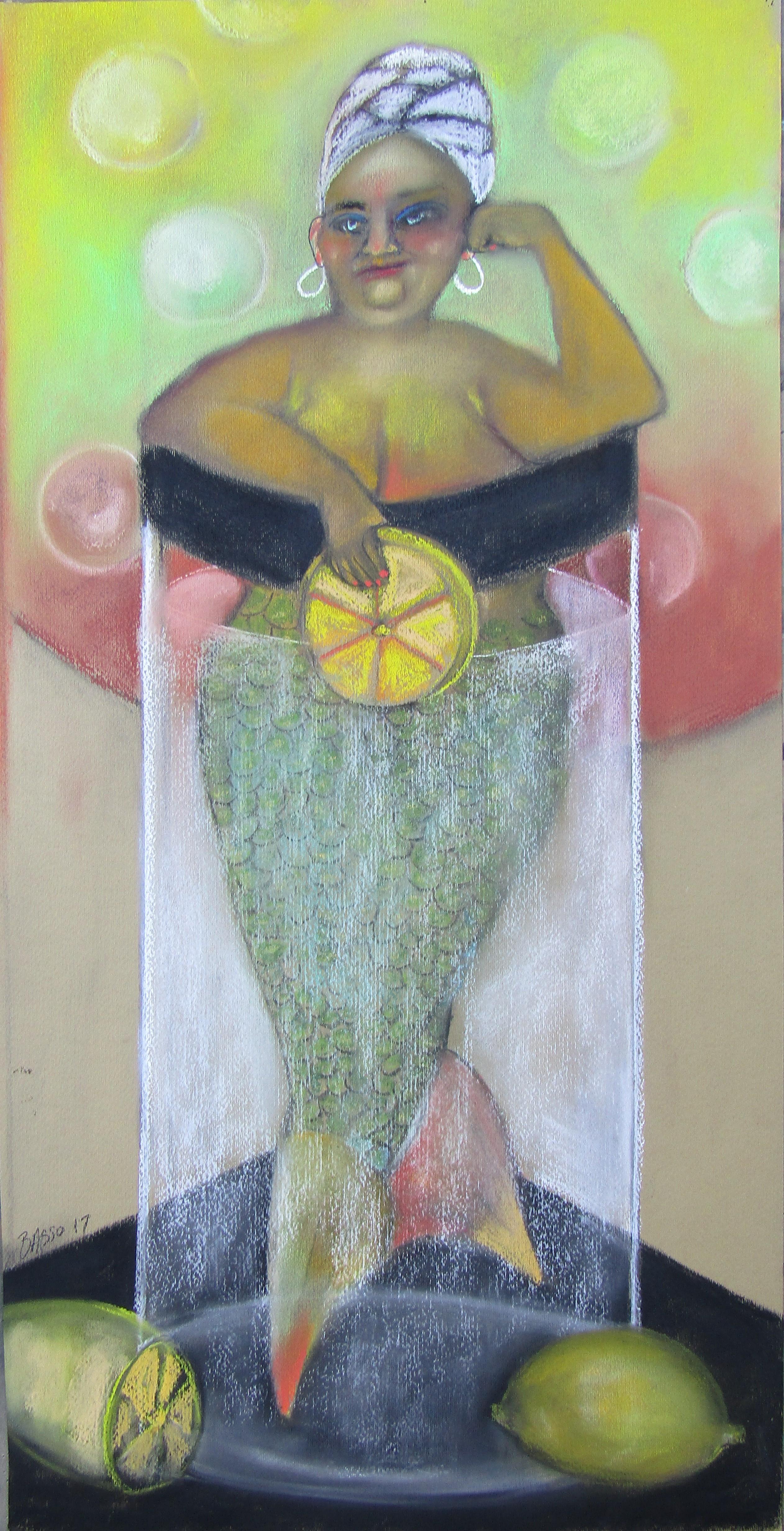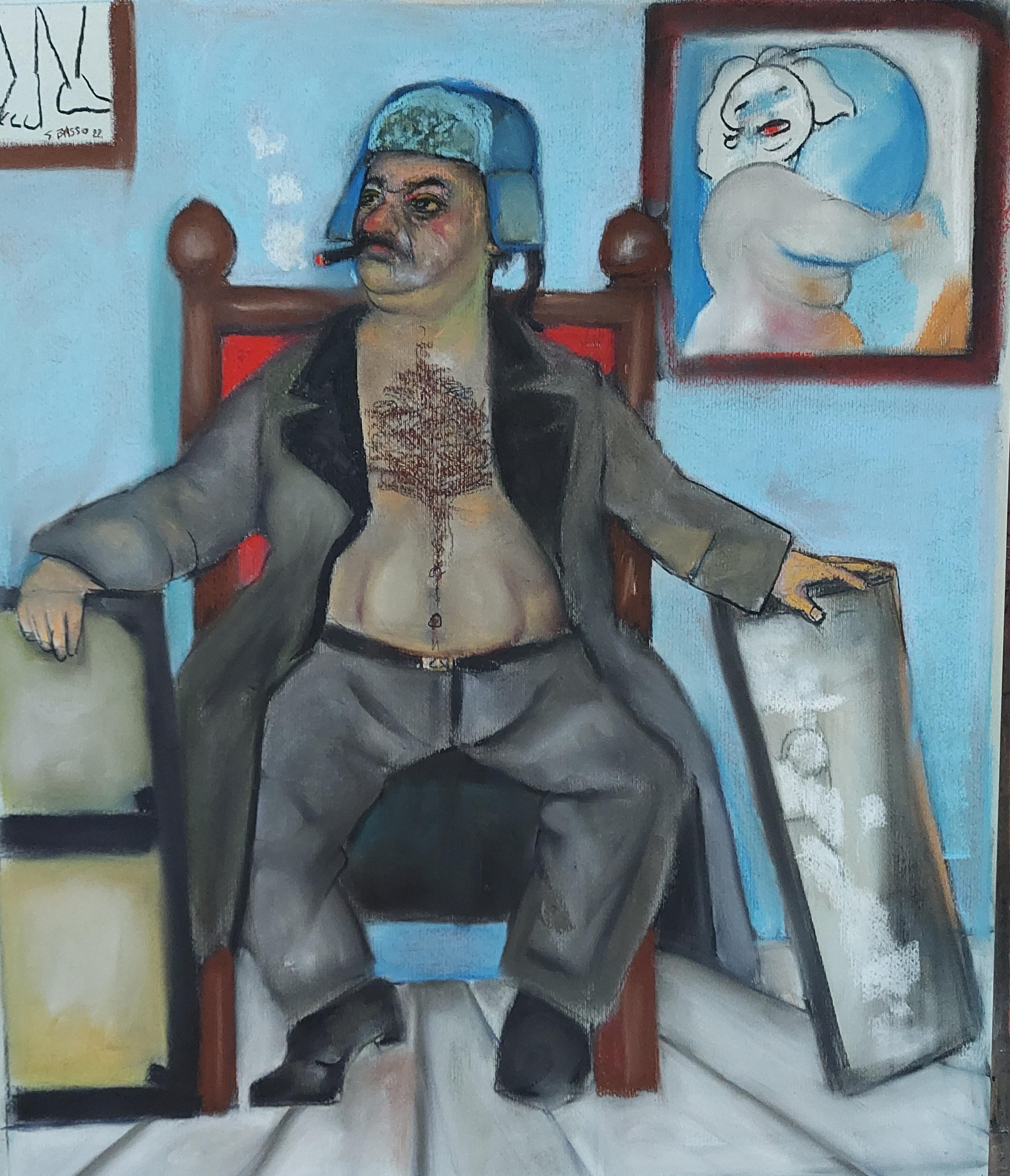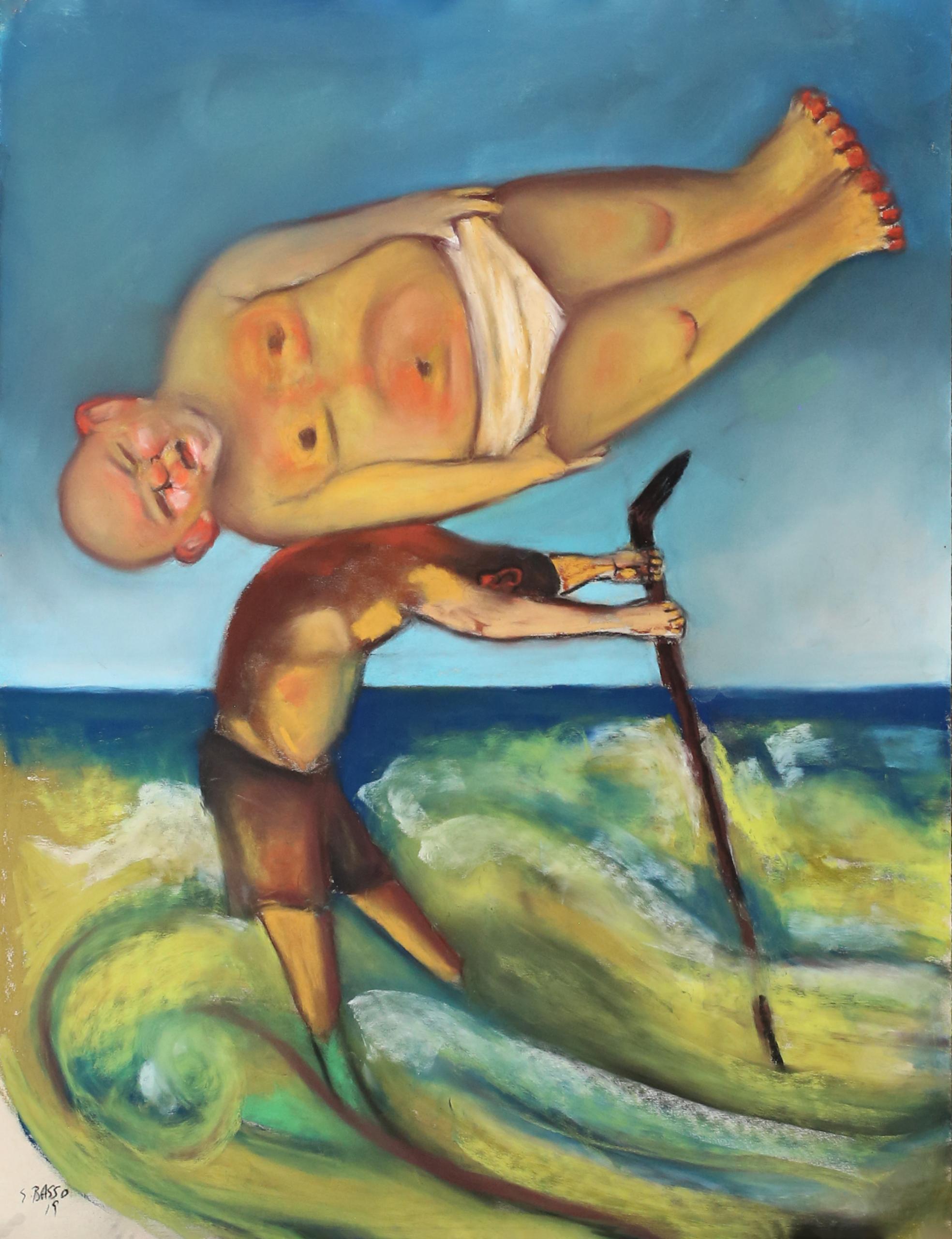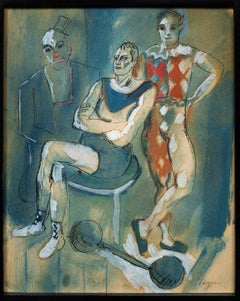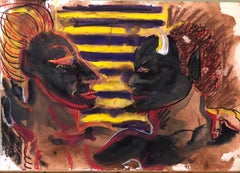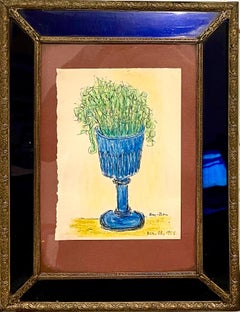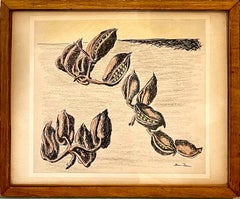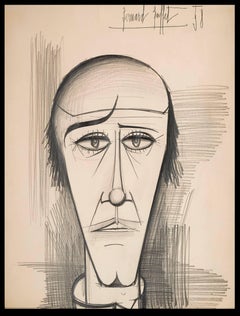
Tête de Clown (Clown Face)
View Similar Items
Want more images or videos?
Request additional images or videos from the seller
1 of 6
Bernard BuffetTête de Clown (Clown Face) 1958
1958
About the Item
- Creator:Bernard Buffet (1928 - 1999, French)
- Creation Year:1958
- Dimensions:Height: 36.62 in (93 cm)Width: 30.71 in (78 cm)Depth: 2.76 in (7 cm)
- Medium:
- Movement & Style:
- Period:
- Condition:
- Gallery Location:Paris, FR
- Reference Number:Seller: 5971c1stDibs: LU68732122903
Bernard Buffet
Bernard Buffet was born on July 10, 1928, in Paris. He was a French painter of Expressionism and a member of the anti-abstract art group L'homme Témoin. He studied art at the École Nationale supérieure des Beaux-Arts and worked in the studio of the painter Eugène Narbonne. Buffet died on October 4, 1999, in Tourtour, France.
Find a collection of original Bernard Buffet prints and other art on 1stDibs.
About the Seller
5.0
Recognized Seller
These prestigious sellers are industry leaders and represent the highest echelon for item quality and design.
Established in 1969
1stDibs seller since 2017
16 sales on 1stDibs
Typical response time: 1 hour
More From This SellerView All
- Nu DeboutBy Marcel GromaireLocated in Paris, FRMarcel Gromaire, 1892-1971, French "Nu Debout", 1951 Ink on paper, Signed and dated lower right GROMAIRE Marcel: Born July 24, 1892 in Noyelles-sur-Sambre (North), died April 11,...Category
1950s Modern Nude Drawings and Watercolors
MaterialsInk, Laid Paper
- Personnages de CirqueBy Celso LagarLocated in Paris, FRCelso Lagar 1891-1966 Spanish Personnages de Cirque (The Circus) Pair of Watercolors on paper Both signed lower right Both measures : Paper: 13 3/4" high x 9 1/2" wide Frame : ...Category
Early 20th Century Modern Figurative Drawings and Watercolors
MaterialsWatercolor, Paper
- La place du TertreBy Frank WillLocated in Paris, FRFrank Will 1900-1951 French La Place du Tertre Watercolor on vellum paper Signed lower right and titled lower left Paper: 19 1/2" high x 24" wide Fr...Category
Early 20th Century Post-Impressionist Landscape Drawings and Watercolors
MaterialsWatercolor, Vellum
- Battle of Auerstaedt, October 14th 1806Located in Paris, FRGeorges HYON (1840 - 1909) Battle of Auerstaedt, October 14th 1806 Oil on canvas Signed and dated lower right Dimensions : 59 x 78 3/4 inches (Dimensions : 150 x 200 cm) Framed : 66 7/8 x 86 5/8 inches (Framed : 170 x 220 cm) Provenance : -Private collection Exhibition: -French Salon of 1891; exhibited under number 849 Formed in multiple squares, the French infantry resisted the assaults of the Prussian cavalry which broke on these impassable walls bristling with thousands of rifle bayonets...Category
19th Century French School Figurative Paintings
MaterialsOil
- Le Voyage - Halte au bord de l'OuedBy Georges WashingtonLocated in Paris, FRGeorges Washington 1827-1910 American Le Voyage - Halte au bord de l'Oued Oil on canvas Signed lower right Canvas: 16 7/8" high x 23 5/8" wide Frame: 29...Category
Late 19th Century Old Masters Figurative Paintings
MaterialsCanvas, Oil
- YterbineLocated in Paris, FRDominique Pollès, 1945, French Yterbine, 1998 Bronze with pink platinium patina Signed, dated and numbered 4/4 Certificate by the Artist Dimension...Category
Late 20th Century Figurative Sculptures
MaterialsBronze
$175,791
You May Also Like
- One More Time (Black Devil) Outsider Art Painting, DrawingBy Peter DeanLocated in Surfside, FLDean was born in 1934 of Jewish parents in a Berlin, Germany, that was falling prey to the Nazis. The family immigrated to New York City in 1938, and Dean was raised in the refugee community in Inwood. Dean's first show (ironically, in retrospect) was given him by the USIA in Brazil. In 1959, he returned to New York to work six months on, six months off in soil engineering and made art in the interims. He tried, and failed, to get into a Tenth Street Gallery. Studying painting at night with Andre Girard at City College pushed him over the edge, and in 1969 he committed himself to painting full time. Artists who impressed him in the '60s were Robert Beauchamp, Lester Johnson, Jan Muller...Category
1980s Expressionist Figurative Drawings and Watercolors
MaterialsPaper, Oil Pastel, Acrylic
- Expressionist Color Drawing Cobalt Glass Vintage Frame Modernist Ben Zion WPABy Ben-Zion WeinmanLocated in Surfside, FLExpressionist ink and pastel crayon drawing of flowers in vase. Framed in a vintage cobalt blue glass original frame Hand signed and dated Framed it measures 13.5 X 10.5 The actual paper is 7.5 X 5.5 Born in 1897, Ben-Zion Weinman celebrated his European Jewish heritage in his visual works as a sculptor, painter, and printmaker. Influenced by Spinoza, Knut Hamsun, and Wladyslaw Reymont, as well as Hebrew literature, Ben-Zion wrote poetry and essays that, like his visual work, attempt to reveal the deep “connection between man and the divine, and between man and earth.” An emigrant from the Ukraine, he came to the US in 1920. He wrote fairy tales and poems in Hebrew under the name Benzion Weinman, but when he began painting he dropped his last name and hyphenated his first, saying an artist needed only one name. Ben-Zion was a founding member of “The Ten: An Independent Group” The Ten” a 1930’s avant-garde group, Painted on anything handy. Ben-Zion often used cabinet doors (panels) in his work. Other members of group included Ilya Bolotowsky, Lee Gatch, Adolph Gottlieb, Louis Harris, Yankel Kufeld, Marcus Rothkowitz (later known as Mark Rothko), Louis Schanker, and Joseph Solman. The Art of “The Ten” was generally described as expressionist, as this style offered the best link between modernism and social art. Their exhibition at the Mercury Gallery in New York held at the same time as the Whitney Annual Exhibition of Contemporary American Painting, included a manifesto concentrating on aesthetic questions and criticisms of the conservative definition of modern art imposed by the Whitney. Ben-Zion’s work was quickly noticed. The New York Sun said he painted “furiously” and called him “the farthest along of the lot.” And the triptych, “The Glory of War,” was described by Art News as “resounding.” By 1939, The Ten disbanded because most of the members found individual galleries to represent their work. Ben-Zion had his first one-man show at the Artist’s Gallery in Greenwich Village and J.B. Neumann, the highly esteemed European art dealer who introduced Paul Klee, (among others) to America, purchased several of Ben-Zion’s drawings. Curt Valentin, another well-known dealer, exhibited groups of his drawings and undertook the printing of four portfolios of etchings, each composed of Ben-Zion’s biblical themes. He worked as a WPA artist. Ben-Zion’s work is represented in many museums throughout the country including the Metropolitan, the Whitney, and the Museum of Modern Art in New York, the Art Institute of Chicago, the Philadelphia Museum of Art and the Phillips Collection, Washington. The Jewish Museum in New York opened in 1948 with a Ben-Zion exhibition. Ben-Zion consistently threaded certain subject matter—nature, still life, the human figure, the Hebrew Bible, and the Jewish people—into his work throughout his life. "In all his work a profound human feeling remains. Sea and sky, even sheaves of wheat acquire a monolithic beauty and simplicity which delineates the transient as a reflection of the eternal. This sensitive inter- mingling of the physical and metaphysical is one of the most enduring features of Ben-Zion's works." (Excerpt from Stephen Kayser, “Biblical Paintings,” The Jewish Museum Catalogue, 1952). Mystical Imprints: Marc Chagall, Ben-Zion, and Ben Shahn presents the print work of three prominent 20th century Jewish artists born in the Russian Empire. Among these seventy pieces are etchings and lithographs from Chagall’s Bible series...Category
1950s Expressionist Still-life Drawings and Watercolors
MaterialsPaper, Oil Crayon, Pastel, Ink
- Expressionist Ink, Pastel, Crayon Drawing Jewish American Modernist Ben Zion WPABy Ben-Zion WeinmanLocated in Surfside, FLExpressionist ink and pastel crayon drawing of beans (carobs, flowers?) in pods Hand signed. Born in 1897, Ben-Zion Weinman celebrated his European Jewish heritage in his visual works as a sculptor, painter, and printmaker. Influenced by Spinoza, Knut Hamsun, and Wladyslaw Reymont, as well as Hebrew literature, Ben-Zion wrote poetry and essays that, like his visual work, attempt to reveal the deep “connection between man and the divine, and between man and earth.” An emigrant from the Ukraine, he came to the US in 1920. He wrote fairy tales and poems in Hebrew under the name Benzion Weinman, but when he began painting he dropped his last name and hyphenated his first, saying an artist needed only one name. Ben-Zion was a founding member of “The Ten: An Independent Group” The Ten” a 1930’s avant-garde group, Painted on anything handy. Ben-Zion often used cabinet doors (panels) in his work. Other members of group included Ilya Bolotowsky, Lee Gatch, Adolph Gottlieb, Louis Harris, Yankel Kufeld, Marcus Rothkowitz (later known as Mark Rothko), Louis Schanker, and Joseph Solman. The Art of “The Ten” was generally described as expressionist, as this style offered the best link between modernism and social art. Their exhibition at the Mercury Gallery in New York held at the same time as the Whitney Annual Exhibition of Contemporary American Painting, included a manifesto concentrating on aesthetic questions and criticisms of the conservative definition of modern art imposed by the Whitney. Ben-Zion’s work was quickly noticed. The New York Sun said he painted “furiously” and called him “the farthest along of the lot.” And the triptych, “The Glory of War,” was described by Art News as “resounding.” By 1939, The Ten disbanded because most of the members found individual galleries to represent their work. Ben-Zion had his first one-man show at the Artist’s Gallery in Greenwich Village and J.B. Neumann, the highly esteemed European art dealer who introduced Paul Klee, (among others) to America, purchased several of Ben-Zion’s drawings. Curt Valentin, another well-known dealer, exhibited groups of his drawings and undertook the printing of four portfolios of etchings, each composed of Ben-Zion’s biblical themes. He worked as a WPA artist. Ben-Zion’s work is represented in many museums throughout the country including the Metropolitan, the Whitney, and the Museum of Modern Art in New York, the Art Institute of Chicago, the Philadelphia Museum of Art and the Phillips Collection, Washington. The Jewish Museum in New York opened in 1948 with a Ben-Zion exhibition. Ben-Zion consistently threaded certain subject matter—nature, still life, the human figure, the Hebrew Bible, and the Jewish people—into his work throughout his life. "In all his work a profound human feeling remains. Sea and sky, even sheaves of wheat acquire a monolithic beauty and simplicity which delineates the transient as a reflection of the eternal. This sensitive inter- mingling of the physical and metaphysical is one of the most enduring features of Ben-Zion's works." (Excerpt from Stephen Kayser, “Biblical Paintings,” The Jewish Museum Catalogue, 1952). Mystical Imprints: Marc Chagall, Ben-Zion, and Ben Shahn presents the print work of three prominent 20th century Jewish artists born in the Russian Empire. Among these seventy pieces are etchings and lithographs from Chagall’s Bible series...Category
Mid-20th Century Expressionist Still-life Drawings and Watercolors
MaterialsPaper, Oil Crayon, Pastel, Ink
- To School in Llanfihangel. First Day at School, Rural Wales. Ceredigion & Powys.By Julian RuddockLocated in Sutton Poyntz, DorsetJulian Ruddock. British ( b.1965 ). To School in Llanfihangel. (First Day at School). Pastel on Paper. Signed. Image size 21.7 inches x 29.6 inches ( 55cm x 75cm ). Frame size 29 in...Category
Late 20th Century Expressionist Figurative Drawings and Watercolors
MaterialsPaper, Pastel
- German Expressionist drawing by Carl Hofer of one of his modelsBy Carl HoferLocated in Petworth, West SussexCarl Hofer (German, 1875 – 1955) Das Modell (The artist’s model) Black crayon on paper Signed with monogram ‘CH’ (lower right) 18 x 14.1/8 in. (45.8 x 36 cm.) Provenance: These works come from the artist’s second wife Elizabeth and from then by descent. Carl Hofer was a German expressionist painter and the director of the Berlin Academy of Fine Arts. One of the most important painters of the Expressionist movement, his work was among those that was considered degenerate art by the Nazis. He studied in Karlsruhe under Hans Thoma. He first visited Paris in 1899 making acquaintance with Julius Meier-Graefe. In 1902 he studied in Stuttgardt and became friends with the sculptor Hermann Haller...Category
20th Century Expressionist Figurative Drawings and Watercolors
MaterialsCrayon, Paper
- German Expressionist drawing by Carl Hofer of a mother and childBy Carl HoferLocated in Petworth, West SussexCarl Hofer (German, 1875 – 1955) Mother and son Black crayon on paper 10.1/2 x 7.3/4 in. (26.7 x 20 cm.) With studio stamp (on the reverse) and signature of the artist’s wife Elizabeth Hofer Provenance: These works come from the artist’s second wife Elizabeth and from then by descent. Carl Hofer was a German expressionist painter and the director of the Berlin Academy of Fine Arts. One of the most important painters of the Expressionist movement, his work was among those that was considered degenerate art by the Nazis. He studied in Karlsruhe under Hans Thoma. He first visited Paris in 1899 making acquaintance with Julius Meier-Graefe. In 1902 he studied in Stuttgardt and became friends with the sculptor Hermann Haller...Category
20th Century Expressionist Figurative Drawings and Watercolors
MaterialsCrayon, Paper
Recently Viewed
View AllMore Ways To Browse
Japanese Watercolor Panel
Japanese Buffet
Japanese Crayon
Vintage Clown Face
Vintage Clown Faces
Clown Face
Bernard Buffet Japan
Bernard Buffet Clown
Original Fashion Sketches
Pen Ink Sketches
American Indian Watercolor
Pen And Ink Sketch
Eagle Drawings
Eagle Drawing
Antique Chalk Painting
Jerusalem Watercolor
Gouache Fashion Drawing
South African Watercolor
